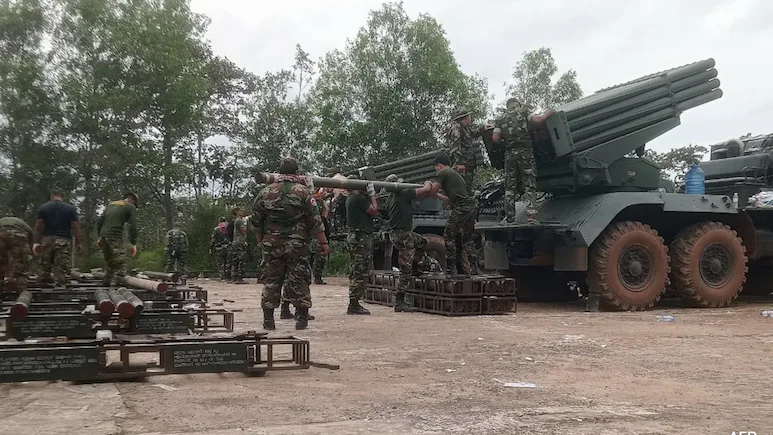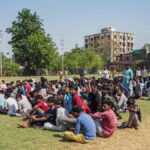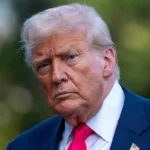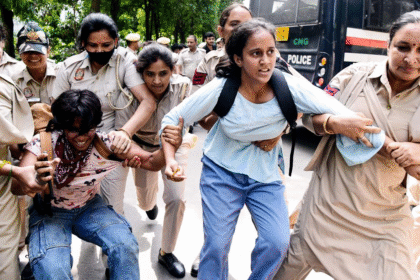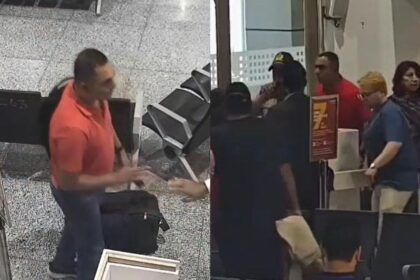Martial Law at the Border — Understanding Thailand’s Sudden Security Move
Thailand imposes martial law in eight districts bordering Cambodia following deadly clashes, escalating border tensions and prompting heightened military control in the region.
A Sudden Shift in Security Posture
In a rare and dramatic development, the government of Thailand has imposed martial law in eight districts along its eastern border with Cambodia, following what officials describe as “deadly clashes” that erupted earlier this week. The announcement, which came through Thailand’s internal security operations and was confirmed by international agencies including AFP, marks a significant shift in the region’s usually calm geopolitical tone.
While Thailand is no stranger to deploying military authority within its borders, especially during times of political turbulence, the declaration of martial law in border areas represents an exceptional escalation — indicating either a grave security concern, cross-border infiltration, or an intensification of longstanding undercurrents that haven’t been widely reported.
What Is Martial Law — and Why Does It Matter Here?
Martial law in Thailand is not a casual measure. It grants the military sweeping authority over civilian administration. Under this legal framework, civil liberties can be suspended, travel restricted, and military officers can detain individuals without court approval, among other powers. These actions are justified in the name of national security and public order.
The fact that this law has now been invoked not in Bangkok or political protest zones—but in rural eastern provinces bordering Cambodia—is deeply telling. It implies not only a high threat perception, but also perhaps a recognition that conventional law enforcement has failed to contain the violence or infiltration in that region.
The Clashes: What Happened and What We Know So Far
Though details remain somewhat limited, local and international reports have confirmed that armed confrontations occurred between unknown groups—possibly paramilitary factions or smugglers—along the porous Thai-Cambodia frontier. These “deadly clashes” reportedly led to multiple fatalities, though the Thai government has yet to release confirmed casualty figures or name the groups involved.
Some unverified reports suggest that the violence stemmed from a clash between Cambodian insurgents and Thai border patrols, while others hint at illegal timber trafficking networks that often operate in the dense forest zones of eastern Thailand. The Dangrek Mountains, which form part of the natural border, are known to be a haven for such activity.
Historical Context: A Tense But Often Quiet Border
While the Thailand–Cambodia border has long been stable in geopolitical terms, it is also a hotbed of low-intensity conflict, resource smuggling, and nationalistic resentment. The two countries have historically disputed territorial rights over the Preah Vihear Temple, a UNESCO World Heritage site perched on the border. Though the International Court of Justice ruled in favour of Cambodia in 2013, tensions have never fully subsided.
Moreover, eastern Thailand has often been under-policed, providing room for illegal activities such as drug trafficking, timber theft, human smuggling, and cross-border black-market operations. These conditions, compounded by poverty and regional corruption, make for a volatile mix—one that may now have erupted into open conflict.
The Eight Districts Under Martial Law
While the Thai government has not immediately disclosed the names of all eight districts, local sources and media reports suggest they lie within Sa Kaeo, Chanthaburi, and Trat provinces. These areas are heavily forested and relatively underdeveloped—making both surveillance and law enforcement more difficult.
Residents in these areas now face curfews, checkpoints, restrictions on movement, and heightened military presence. According to early statements by Thai security officials, these measures are “temporary” and “preventive”—but history suggests such states of exception can sometimes extend far beyond their original scope.
Regional Impact and International Response
While Thailand’s military leadership insists the decision is purely internal, neighbouring Cambodia is watching closely. Cambodian officials have expressed “concern” over the declaration, especially if it affects trade, travel, or ethnic minorities living on both sides of the border.
International organizations, including human rights watchdogs and the United Nations, have already begun monitoring the situation for signs of potential abuses, particularly if arbitrary arrests or displacement of locals occur under the martial law umbrella.
Furthermore, global investors and tourists—especially those visiting Cambodia or Thailand’s eastern provinces—are being advised to exercise caution. Travel advisories are expected to follow from various embassies.
Political Undertones Behind a Security Declaration
While the official justification for the imposition of martial law in the border districts is based on “deadly clashes”, analysts and observers are beginning to question whether the move also carries political undertones. Thailand’s civil-military dynamics have long blurred the line between national security and political control.
The country has witnessed multiple military coups in its modern history—the most recent in 2014, after which General Prayut Chan-o-cha ruled as Prime Minister for nearly a decade. Even after transitioning back to civilian-led government in 2023, the military has retained strong influence, particularly in matters relating to borders, internal stability, and constitutional powers.
In this context, the declaration of martial law—even in remote districts—revives concerns that Thailand’s armed forces continue to operate with disproportionate autonomy and limited civilian oversight, especially in times of political uncertainty or unrest.
Military-Civilian Relations: A Fragile Balance
Thailand’s modern political landscape is shaped by a unique balance between civilian rule and military authority. Since 1932, when absolute monarchy ended, the country has experienced more than a dozen successful or attempted military coups. As a result, the military has often positioned itself as both a guardian of national sovereignty and a fallback authority during crises.
This legacy has created a dual power structure, where the Prime Minister and civilian ministers may officially lead the government, but the military retains the right to act autonomously in designated “security zones.” The imposition of martial law in the current context—without detailed parliamentary debate or public consultation—raises questions about transparency and democratic accountability.
Voices from the Ground: Life Under Martial Law
Residents in the affected provinces are beginning to share stories of sudden disruptions. In several districts of Sa Kaeo and Chanthaburi, villagers have reported the presence of army convoys, nighttime patrols, and checkpoints on rural roads.
Local business owners, especially those dealing in cross-border trade with Cambodia, have expressed concern that the military restrictions could strangle local economies already battered by COVID-19 and global inflation.
“I haven’t seen this many soldiers here in 20 years,” said a fruit vendor in Aranyaprathet, a key trade town near the Cambodian border. “People are afraid to go out after dark. Even if you’re doing nothing wrong, you’re questioned.”
These experiences echo the past—when martial law in Bangkok during political protests or under junta rule led to mass surveillance, curfews, and suppression of dissent. Though the current declaration is localized, there is a palpable fear that it may spread, especially if tensions escalate.
Cambodia’s Position: Cautious but Wary
The Cambodian government has thus far responded with measured caution. In a statement issued through its Foreign Ministry, Phnom Penh expressed “concern” over the use of military powers near its sovereign border, and called for cooperation and clarity from the Thai side.
Cambodia shares a long and sometimes fragile relationship with Thailand. While trade and tourism have generally flourished, the two nations have also sparred over heritage sites, military outposts, and treatment of migrant workers. The Preah Vihear Temple dispute, which flared violently in 2008–2011, still casts a shadow over bilateral trust.
There is also growing concern in Phnom Penh that this martial law declaration could be a pretext for Thailand to exert military pressure or control the flow of migrants and refugees—particularly given that Cambodia has its own history of political crackdowns and refugee outflows.
ASEAN’s Dilemma: Silence or Engagement?
As founding members of the Association of Southeast Asian Nations (ASEAN), both Thailand and Cambodia are bound by regional principles of non-interference and peaceful cooperation. However, ASEAN has historically struggled to respond decisively to internal unrest or border tensions among member states.
So far, ASEAN’s response to Thailand’s martial law has been muted—reflecting both the alliance’s reluctance to intervene and its ongoing challenges in developing effective security protocols. That said, quiet diplomacy may be underway, as regional leaders attempt to defuse potential escalation before it becomes a wider issue.
The martial law situation thus exposes a fundamental weakness in ASEAN’s architecture: it can facilitate trade and dialogue, but is ill-equipped to address hard security threats, border militarisation, or internal repression.
Military Intentions: Temporary Safeguard or Strategic Signal?
The Thai military insists that the martial law declaration is temporary and solely aimed at stabilizing the affected districts. However, history teaches caution. In 2014, martial law in Bangkok was similarly presented as a short-term measure but quickly transformed into a nationwide military coup.
Analysts warn that the current move may be a signal—both internally and externally. Internally, it demonstrates the military’s enduring authority and willingness to act swiftly without waiting for bureaucratic green lights. Externally, it sends a message to Cambodia and the region: Thailand will not hesitate to militarise its frontier if its sovereignty is even remotely challenged.
Critics, however, argue that such responses often exacerbate tensions rather than resolve them. By involving soldiers instead of diplomats or border patrols, Thailand may be setting the stage for greater confrontation, not peace.
Border Trade: An Economy in Sudden Lockdown
The districts placed under martial law are not just obscure frontier towns—they are economic lifelines that form part of Thailand’s cross-border trade network with Cambodia. Towns like Aranyaprathet in Sa Kaeo Province and Ban Khlong Luek near the Poipet border crossing are hubs for formal and informal trade.
For decades, local economies here have thrived on agricultural exports, processed goods, timber transactions, and, occasionally, smuggled items. But with the imposition of martial law, checkpoints have increased, movement has been restricted, and cargo clearance times have reportedly tripled.
Local merchants now find themselves stranded with goods at border gates, while Cambodian laborers—many of whom cross daily—have been left uncertain whether they can return to their jobs or families.
“Every day of delay costs us thousands,” said a rice trader based in Chanthaburi. “We depend on the rhythm of open borders. This military lockdown feels like a chokehold.”
The result? A creeping sense of economic paralysis in these frontier districts—where survival depends not on national headlines, but on daily passage, seasonal trade, and mutual trust between people on either side of the invisible line.
Migrant Workers and the Hidden Workforce in Crisis
Thailand’s border with Cambodia is more than a geopolitical line—it is a lifeline for tens of thousands of migrant workers. Many Cambodian nationals work in Thailand’s construction, agriculture, fisheries, and hospitality sectors, often under precarious legal arrangements.
While the current martial law is geographically limited, its psychological impact has rippled through the Cambodian migrant community nationwide. Rumors of wider detentions, arbitrary ID checks, and raids have led to panic-induced withdrawals from urban job sites, even in places far from the eight districts.
Several rights groups have reported that migrant workers are being turned away at border crossings without formal denial notices—raising concerns of racial profiling and extra-legal discrimination under the cover of national security.
Cambodia’s labor ministry has already demanded assurances that “legitimate Cambodian workers will not be targeted or unfairly detained.” But with the Thai military holding sweeping powers in martial law zones, legal recourse for these migrants is virtually nonexistent.
Tourism Industry Faces Sudden Jitters
The Thai economy is heavily dependent on tourism, and provinces near Cambodia like Trat and Chanthaburi are known for eco-tourism, beach towns, gem markets, and historical trails. The declaration of martial law has prompted several international travel platforms to flag these regions as caution zones, triggering booking cancellations and loss of revenue.
While Bangkok and Phuket remain unaffected, the psychological impact of martial law—and the global headlines it generates—has cast a shadow over Thailand’s image as a safe travel destination.
Several embassies, including those of the United States, Australia, and France, have issued travel advisories for the affected areas. Tour operators have rerouted packages, and hospitality stakeholders are preparing for a dip in footfall during the next quarter.
One resort owner near the Cambodian border said bluntly:
“We’ve spent two years recovering from COVID. This martial law is another tsunami, just in camouflage.”
Domestic Civil Society Raises Alarm
Inside Thailand, civil society groups, academics, and rights organizations have started voicing concern over the opaque manner in which martial law was imposed. While the Thai constitution does allow for emergency declarations, critics argue that the lack of parliamentary consultation, media briefings, or judicial oversight reflects the militarisation of civil governance.
The Thai Lawyers for Human Rights (TLHR) has issued a statement demanding that the government “clearly specify the timeline and scope of martial law” and “ensure that no human rights are suspended beyond what is absolutely necessary.”
Student unions in Chiang Mai and Bangkok have also held small protests, asking whether security operations in remote districts could one day serve as testing grounds for broader authoritarianism under the guise of “national interest.”
While the central government maintains that the declaration is strictly limited and temporary, the vagueness of the martial law order—and Thailand’s history of military overreach—has done little to reassure its critics.
Media Restrictions and the Narrative Vacuum
Another consequence of martial law has been the effective limitation on press freedom in the declared zones. Independent journalists have reported being turned back at military checkpoints, having their footage deleted, or being warned not to speak to residents.
National broadcasters are largely echoing the military’s official narrative, with little investigative reporting or fact-checking of the events leading to the imposition. This information vacuum has led to a flood of speculation on social media—ranging from allegations of insurgency to suggestions of staged conflict to justify troop presence.
Thailand’s Cyber Crime Police Division has warned citizens against “spreading false information” online, citing national security threats. While the statement is standard for crisis moments, observers fear that the martial law atmosphere may also be used to suppress criticism and censor alternate narratives.
In a digital age, where disinformation spreads fast but censorship can be faster, the battle for truth in Thailand’s eastern provinces may become as contested as the land itself.
A Country Well Acquainted With the Military
Thailand is not unfamiliar with martial law. In fact, the very phrase “martial law” (กฎอัยการศึก) has been invoked more frequently in Thailand than in almost any other country not in active war. Since the end of absolute monarchy in 1932, Thailand has experienced 13 successful military coups, numerous failed ones, and a long history of military-led or military-influenced governments.
The Thai military doesn’t just defend borders—it shapes governance, writes constitutions, and controls emergency narratives. This legacy has been accepted—sometimes grudgingly, sometimes willingly—by large parts of the population, particularly when the alternative has been viewed as disorder or political chaos.
This historical conditioning means that, while martial law might alarm international observers or urban liberals, in rural provinces—including those now under martial law—it can be seen as a temporary return to “order”, especially when trust in local governance is low.
How Martial Law Has Been Used in the Past
Thailand’s most famous uses of martial law have occurred in Bangkok and central provinces during major protests or leadership crises. For example:
- In 2006, the military declared martial law following the ousting of Prime Minister Thaksin Shinawatra.
- In 2010, martial law accompanied a brutal crackdown on the Red Shirt protests.
- In 2014, General Prayut invoked martial law just before seizing power in a full-fledged coup, promising reform and order.
Each time, martial law began as a localized or temporary security measure, but soon morphed into nationwide control, media blackouts, arrests, and institutional reengineering.
What makes the 2025 martial law in the eastern districts different, however, is that it wasn’t preceded by a visible urban uprising or political standoff. It was triggered instead by rural violence and border instability—raising the question: is the Thai state redefining what constitutes a “threat”?
Martial Law as a Political Instrument
Under Thailand’s Martial Law Act of 1914, the army has sweeping authority to act without civilian approval. The law permits:
- Arrest without warrant
- Censorship of press
- Curfews and no-go zones
- Commandeering of private property
- Military courts in place of civilian ones
Although the law is over a century old, it has never been substantially reformed, and modern Thai governments—even civilian-led ones—have not shown strong initiative to repeal or revise it. The military, meanwhile, has resisted any effort to dilute these powers, claiming that such tools are necessary for “exceptional threats.”
Critics argue that this has led to the normalization of emergency exceptionalism—a dangerous trend where the state regularly invokes extraordinary powers for situations that could be managed through conventional law enforcement.
In other words, martial law in Thailand isn’t just a tool of crisis management—it has become a mechanism of political architecture.
The People’s Voice: Submission, Support, or Silent Resistance?
Public opinion in Thailand is a mosaic. In Bangkok and other major cities, many citizens—especially younger voters—have grown weary of military interventions. They see martial law not as a guarantor of peace, but as a shortcut around democracy.
Yet in many rural districts, including those now under military control, the mood is more mixed. For some, the presence of soldiers signals safety, especially in regions where local corruption or cross-border threats have eroded trust in police forces.
Interviews with residents near the Cambodian border suggest a range of views:
- “We feel safer now. The soldiers don’t take bribes like local officials,” said one shop owner in Sa Kaeo.
- “But we can’t speak freely. Even Facebook posts are being watched,” warned a local teacher.
This duality captures the paradox of martial law in Thailand: it offers short-term security but carries the long-term price of surveillance, censorship, and civic anxiety.
A Regional Pattern of Emergency Powers
Thailand’s use of martial law should also be seen in a broader global context. Across Asia—and indeed the world—governments are increasingly resorting to emergency declarations to address a wide range of challenges: pandemics, protests, terrorism, climate disasters, or border disputes.
From Myanmar’s military junta, to Philippine anti-drug crackdowns, to India’s emergency powers in Kashmir, a regional trend is emerging: the reliance on security apparatuses to solve political or civil governance failures.
Thailand is not alone in this—but it is among the most institutionalised in how legality is weaponised to empower the military at moments of choice rather than necessity.
Where Civilian Institutions Stand
The Thai Parliament has remained largely passive in the wake of the martial law declaration. While some opposition members have raised questions, no urgent session has been convened to debate the necessity, scope, or timeline of the measure.
The judiciary, often reluctant to challenge national security decisions, has also remained quiet. Thailand’s Administrative Court, which has jurisdiction over state orders, has not taken up any petitions so far.
Media institutions—once known for spirited coverage—are self-censoring. Only a few digital outlets and foreign correspondents are investigating what’s happening in the eastern districts, and public broadcasting has mostly repeated official statements.
This vacuum has emboldened the military’s narrative, allowing it to frame martial law as a proactive security measure, not a repressive overreach.
Also Read : You Speak Bengali, So You’re Bangladeshi”: Muslim Families in NCR Face Harassment Over Language


